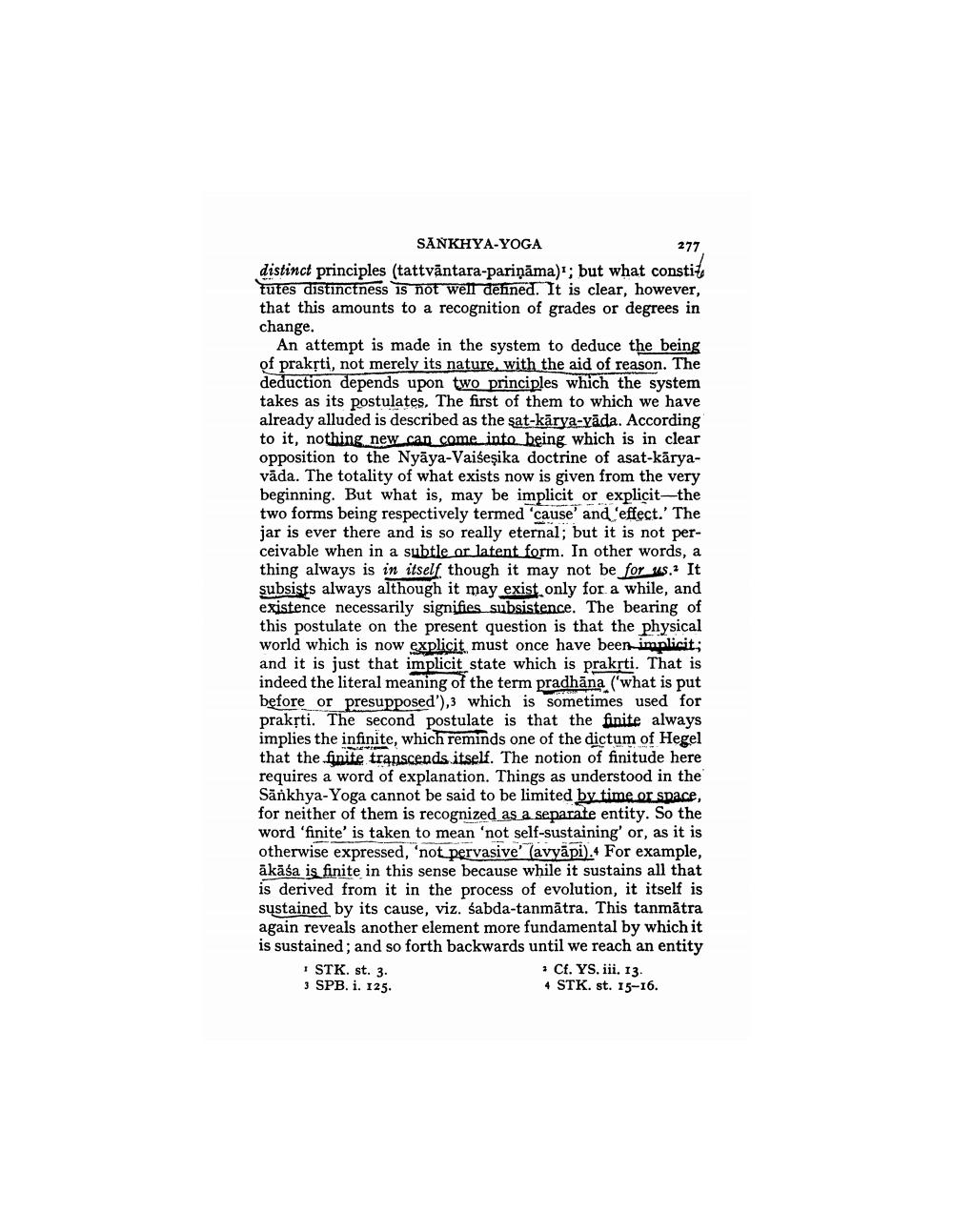________________
SANKHYA-YOGA
277
distinct principles (tattväntara-pariņāma); but what constit tutes distinctness is not well defined. It is clear, however, that this amounts to a recognition of grades or degrees in change.
An attempt is made in the system to deduce the being of prakṛti, not merely its nature, with the aid of reason. The deduction depends upon two principles which the system takes as its postulates. The first of them to which we have already alluded is described as the sat-karya-yada. According to it, nothing new can come into being which is in clear opposition to the Nyaya-Vaišeşika doctrine of asat-karyavada. The totality of what exists now is given from the very beginning. But what is, may be implicit or explicit-the two forms being respectively termed 'cause' and 'effect.' The jar is ever there and is so really eternal; but it is not perceivable when in a subtle or latent form. In other words, a thing always is in itself though it may not be for us. It subsists always although it may exist only for a while, and existence necessarily signifies subsistence. The bearing of this postulate on the present question is that the physical world which is now explicit must once have been implicit; and it is just that implicit state which is prakṛti. That is indeed the literal meaning of the term pradhana ('what is put before or presupposed'),3 which is sometimes used for prakṛti. The second postulate is that the finite always implies the infinite, which reminds one of the dictum of Hegel that the finite transcends itself. The notion of finitude here requires a word of explanation. Things as understood in the Sankhya-Yoga cannot be said to be limited by time or space, for neither of them is recognized as a separate entity. So the word 'finite' is taken to mean 'not self-sustaining' or, as it is otherwise expressed, 'not pervasive' (avyani) For example, ākāśa is finite in this sense because while it sustains all that is derived from it in the process of evolution, it itself is sustained by its cause, viz. śabda-tanmatra. This tanmatra again reveals another element more fundamental by which it is sustained; and so forth backwards until we reach an entity
1 STK. st. 3.
3 SPB. i. 125.
Cf. YS. iii. 13.
4 STK. st. 15-16.




